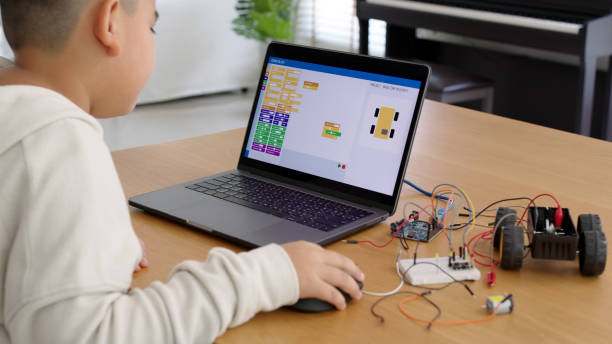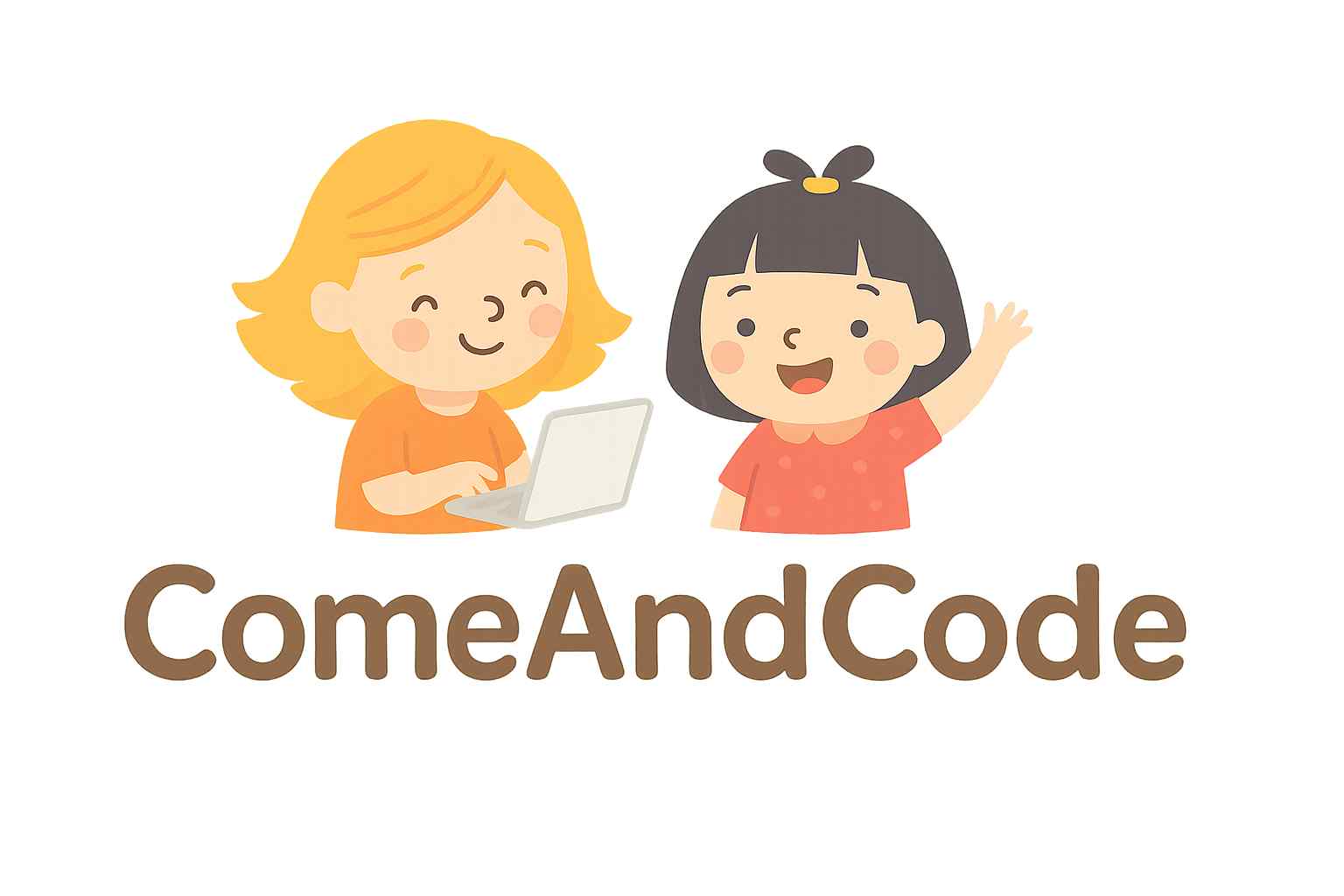Coding for 8-Year-Olds in 2024 is increasingly central to our lives, teaching coding to children is no longer a luxury—it’s a necessity. For 8-year-olds, coding offers not just technical skills but also fosters creativity, logical thinking, and problem-solving abilities. This guide explores everything you need to know about introducing coding to 8-year-olds in 2024, from tools and methods to the benefits and prospects.
1. Why Teach Coding to 8-Year-Olds?

a. Development of Essential Skills
At 8, children are in a critical stage of cognitive and emotional development. Coding enhances:
- Problem-Solving Skills: Learning to debug and find solutions fosters resilience.
- Logical Thinking: Coding requires sequencing and pattern recognition.
- Creativity: Designing games or animations encourages out-of-the-box thinking.
b. Future-Ready Education
With coding becoming a fundamental skill across industries, early exposure gives kids a competitive edge for future careers.
c. Fun and Engagement
Modern coding platforms make learning interactive and enjoyable, turning complex concepts into fun activities.
2. How to Introduce Coding to 8-Year-Olds
a. Use Age-Appropriate Tools
Selecting the right tools is key to keeping young learners engaged. Look for:
- Visual Programming Languages: Block-based tools like Scratch allow kids to drag and drop commands.
- Game-Based Learning: Platforms like Minecraft Education Edition teach coding through play.
- Interactive Robots: Tools like LEGO Mindstorms make coding tangible.
b. Start with the Basics
Introduce fundamental concepts such as:
- Algorithms: Teaching kids to follow step-by-step instructions.
- Loops: Explaining repetitive tasks in coding.
- Conditionals: Helping kids understand decision-making in programs.
c. Encourage Hands-On Learning
Practical projects like building a simple game or creating animations make coding relatable and exciting.
3. Best Coding Platforms for 8-Year-Olds in 2024
a. Scratch
One of the most popular platforms for kids, Scratch uses block-based coding to teach fundamental concepts.
- Features: Drag-and-drop interface, vibrant community.
- Ideal For: Creating animations, stories, and games.
b. Code.org
Focused on introducing coding to young learners through guided courses and games.
- Features: Free resources, and tutorials with popular characters.
- Ideal For: Beginners and structured learning.
c. Roblox Studio
For kids interested in game design, Roblox Studio teaches Lua programming in a fun, interactive environment.
- Features: Game development, monetization options.
- Ideal For: Kids with an interest in game mechanics.
d. LEGO Education SPIKE Prime
Combining coding and robotics, this tool encourages creativity and hands-on exploration.
- Features: Easy-to-use hardware, app-based coding.
- Ideal For: STEM-focused projects.
4. Tips for Parents and Educators
a. Create a Structured Learning Environment
- Allocate specific times for coding to build a routine.
- Provide a quiet space free from distractions.
b. Encourage Collaborative Learning
Group activities or coding camps can enhance teamwork and social interaction.
c. Celebrate Small Wins
Acknowledging milestones, such as completing a project or debugging code, keeps kids motivated.
d. Avoid Overloading
Balance coding with other activities to ensure a well-rounded education.
5. Challenges in Teaching Coding to 8-Year-Olds
a. Short Attention Spans
Young learners can lose focus quickly. To address this:
- Use interactive tools.
- Incorporate frequent breaks.
b. Balancing Screen Time
Excessive screen time can have negative effects. Strategies to mitigate this include:
- Encouraging unplugged coding activities like logic puzzles.
- Setting time limits for digital learning sessions.
c. Lack of Access to Resources
Not every family has access to high-speed internet or devices. Offline tools and community programs can help bridge this gap.
6. The Role of Mini Coders in Nurturing Young Programmers
At Mini Coders, we specialize in providing tailored coding education for kids, including 8-year-olds.
Why Choose Mini Coders?
- Customized Curriculum: Designed specifically for young learners.
- Expert Instructors: Skilled in making coding engaging and easy to understand.
- Interactive Projects: Hands-on activities that inspire creativity and learning.
- Flexible Learning Options: Online and offline classes to suit different needs.
With our guidance, kids develop a love for coding that lasts a lifetime.
7. The Future of Coding for Kids
a. Integration with AI and Robotics
In 2024, coding is moving beyond software to include AI and robotics. Introducing these elements early prepares kids for future innovations.
b. Cross-Disciplinary Learning
Coding is being integrated with subjects like math and science, creating opportunities for holistic learning.
c. Career Opportunities
From app development to cybersecurity, early coding education opens doors to diverse career paths.
8 Fun Coding Projects for 8-Year-Olds
a. Create a Simple Game
Using Scratch, kids can design a basic game with characters, scoring, and levels.
b. Build a Story Animation
Encourage kids to tell a story by animating characters and backgrounds.
c. Program a Robot
Using tools like LEGO Mindstorms, kids can build and program a robot to perform tasks.
d. Explore Web Design
Simple tools like Glitch introduce kids to creating basic web pages.
9. Coding and Cognitive Development

a. Improved Problem-Solving
Coding challenges children to think critically and find solutions independently.
b. Enhanced Memory and Focus
Following sequences and debugging errors sharpens cognitive skills.
c. Boost in Confidence
Completing projects and overcoming challenges instill a sense of achievement.
10. Conclusion
Coding for 8-year-olds is more than just learning a technical skill—it’s about fostering creativity, critical thinking, and resilience. With platforms like Scratch, Code.org, and the expert guidance of Mini Coders, children can embark on an exciting journey into the world of programming. Start your child’s coding adventure today and equip them with skills for a brighter, tech-driven future.
For more information or to enroll your child in our programs, visit Mini Coders and take the first step toward unlocking their potential.
